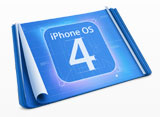Slate’s Jack Schafer, a writer I admire very much, has written about the iPad, the iPhone, the App Store, and Apple’s very un-PC-like control over the entire system. His title, “Apple Wants to Own You,” kind of says it all. But here’s more:
Actually, the iPad and its silicon predecessors, the iPod Touch and iPhone, aren’t insane. What’s insane is the perimeter mines, tank traps, revetments, and glacis he’s deployed around these shiny devices to slow software developers to a crawl so he can funnel them through his rapacious toll booth and collect a sweet vig before he’ll let their programs run on your new iDevice.
[snip]
[The Future of the Internet and How to Stop It author Jonathan] Zittrain peppers his book with examples of “killer” applications that nobody could have imagined emerging from uncredentialed developers. A hobbyist in Tasmania wrote Trumpet Winsock, which allowed Windows PCs to access the Internet. A pair of students wrote the first graphical PC Internet browser in three months.
I’ve squawked frequently about both the overarching principles and specifics of the App Store myself. If the day comes when Apple lets apps get onto iPhones and iPods without insisting on being an intermediary, it’ll be a profoundly good thing. But I think anyone who rants about the current situation needs to address the following points:
Despite Apple’s restrictions and micromanaging, the iPhone has inspired far more creativity than any mobile platform before it. (Or if you wanna argue that third-party Android, say, exhibit more imagination than iPhone ones, be my guest–but make your case.)
Apple may take a thirty percent cut of the money people fork over for paid apps, but a substantial percentage of apps (including some of the best ones) are free. In those cases, Apple is subsidizing distribution, not serving as rapacious toll collector. (Yes, of course, it profits handsomely from the fact that all those free apps make the iPhone and iPad so compelling, but the embarrassment of free apps does interfere with any “Apple wants money every time you do something on its devices” theory.)
The App Store is rife with interesting products from uncredentialed developers who wrote programs to solve their own problems. Guys in basements. Teenagers. Other folks whose software found a wide audience quickly thanks in part to Apple making it easy for iPhone and iPad users to find it.
Shafer says that anyone who thinks that “Apple’s rules are more about blunting competitors and creating a prudish atmosphere guaranteed to offend nobody than they are about throttling viruses and improving the user experience” is “a captive of Steve Jobs’ reality-distortion field.” Maybe so. But with the possible exception of a BlackBerry–and setting aside AT&T issues for the moment–the iPhone is the only smartphone I’ve ever owned that I can actually count on to work. (I can’t say that about my Droid.) I don’t think people who find the iPhone’s stability to be a major plus are dupes.
Like I say, I’m no Apple apologist. (Every time I think of its refusal to approve the Google Voice app–without ever quite rejecting it–my blood pressure rises.) But Schafer’s piece, like some of the ones he applauds, doesn’t ever address the reality of the iEcosystem as evidenced by the apps and services that exist for it. It’s simply not that dystopian. And while I continue to believe that openness will eventually prevail over closed systems, the iPhone’s more open rivals have yet to prove they can provide a better experience than Apple’s semi-walled garden.
 As I wrote a few weeks ago, frustration with AT&T coverage in San Francisco’s SOMA neighborhood led me to put my iPhone 3GS aside and switch to a Verizon Wireless Droid. I found that I liked the reliability of Verizon’s service, and loved certain things about Android–but that the overall experience was way less polished and predictable than the iPhone.
As I wrote a few weeks ago, frustration with AT&T coverage in San Francisco’s SOMA neighborhood led me to put my iPhone 3GS aside and switch to a Verizon Wireless Droid. I found that I liked the reliability of Verizon’s service, and loved certain things about Android–but that the overall experience was way less polished and predictable than the iPhone.

 Three weeks ago, Opera
Three weeks ago, Opera  Rumors of Microsoft phones that pack Zune software and are essentially next-generation versions of the Sidekick platform it acquired have been around forever–or
Rumors of Microsoft phones that pack Zune software and are essentially next-generation versions of the Sidekick platform it acquired have been around forever–or 